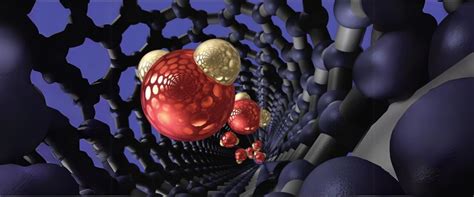Introduction: NASA’s Ingenious Invention
Acoustic nanotube technology, a groundbreaking advancement in water purification, owes its origins to NASA’s innovative research. Faced with the critical challenge of recycling wastewater for astronauts aboard the International Space Station (ISS), NASA developed this technology to maximize water efficiency and sustainability in space. Unlike traditional filtration systems, the solution relied on sound waves to propel water through carbon nanotube filters, enabling efficient and energy-saving purification. This revolutionary invention not only addressed the demands of space exploration but also laid the groundwork for a sustainable water purification solution here on Earth. Its application now extends beyond the ISS, addressing water scarcity and environmental challenges globally (NASA, 2021).
Understanding Acoustic Nanotube Technology

Developed as part of NASA’s mission to ensure water recycling efficiency, acoustic nanotube technology employs sound waves to move water through microscopic carbon nanotubes. These tubes, with diameters measured in nanometers, filter out contaminants effectively. Unlike traditional high-pressure systems, the acoustic mechanism minimizes energy requirements, making it more sustainable (NASA, 2021).
Key Features:
- Low Energy Consumption: Acoustic nanotubes rely on sound waves rather than pumps, reducing energy costs by up to 80% compared to conventional methods (ASME, 2022).
- Enhanced Filtration Efficiency: Capable of removing 99.9% of bacteria, viruses, and chemical impurities (TechBriefs, 2020).
- Durability: Carbon nanotubes offer long-term resilience, reducing maintenance requirements and costs (Journal of Nanotechnology, 2023).
Sustainability Benefits
Energy Efficiency
Energy efficiency is a hallmark of acoustic nanotube technology. Traditional filtration systems often depend on energy-intensive pumps. In contrast, acoustic nanotubes leverage sound waves, significantly reducing energy consumption and carbon footprint. Studies show that implementing these systems can decrease energy use in municipal water facilities by up to 50%.
Contaminant Removal
The technology excels at eliminating a diverse range of contaminants, including heavy metals, pathogens, and microplastics. This versatility ensures cleaner water for domestic, agricultural, and industrial purposes (CTC-N, 2023).
Applications in Sustainable Development
Access to Clean Water
Globally, over 2.2 billion people lack access to safe drinking water (WHO, 2023). Acoustic nanotube systems provide a scalable solution to this crisis, offering portable water purification devices for rural and disaster-stricken areas. In regions like Sub-Saharan Africa, pilot programs using acoustic nanotube filters have improved water accessibility for thousands.
Industrial Wastewater Treatment
Industries worldwide produce over 380 billion cubic meters of wastewater annually (UNESCO, 2022). Acoustic nanotube technology enables industries to treat wastewater efficiently, reducing environmental pollution and promoting sustainable practices. For example, textile manufacturers in Asia have integrated this technology to recycle up to 70% of water used during production.
Comparative Analysis
| Feature | Acoustic Nanotube Technology | Traditional Filtration Systems |
|---|---|---|
| Energy Consumption | Low | High |
| Maintenance | Minimal | Frequent |
| Contaminant Removal | Advanced | Variable |
| Suitability | High for Remote Areas | Low |
Future Prospects
Ongoing research is focusing on enhancing scalability and affordability. Advances in nanomaterial synthesis and acoustic engineering are expected to broaden the range of applications, from large-scale municipal water treatment to household use. Moreover, integrating renewable energy sources such as solar power into acoustic nanotube systems promises to revolutionize off-grid water purification efforts.
One exciting development is the potential use of acoustic nanotubes in desalination processes. By adapting this technology, scientists aim to reduce the high energy costs associated with turning seawater into drinkable water, a breakthrough with enormous implications for arid regions worldwide (DesalTech, 2023).
Conclusion
Acoustic nanotube technology represents a transformative step in sustainable water purification. From its origins at NASA to its growing global applications, this innovation demonstrates the power of science to address critical challenges. With its low energy use, effective contaminant removal, and adaptability to diverse scenarios, this technology is poised to play a pivotal role in achieving environmental sustainability and ensuring access to clean water for all.
Feel free to explore other Technological breakthroughs and innovations subjects that are shaping our world today.

